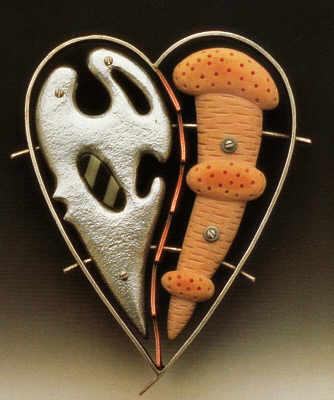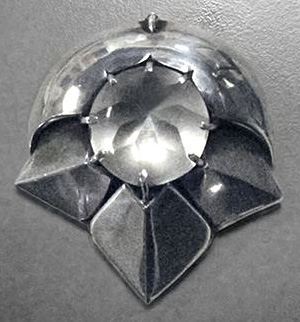
Boston is shining the spotlight this summer on a pioneer of American studio jewelry: Margret Craver. If you’re a collector of Modernist jewelry, you may have heard some important pieces by her are coming up for auction at Skinner on June 14.
Having lived to the age of 103 – she passed away only recently – Craver was able to watch the complete evolution of the studio jewelry movement she helped launch.
Before World War II, she was a devoted and experimental jewelry artist. After the war, she threw herself just as passionately into helping other jewelry artists take fine metalsmithing to a new level.
You’ll have a couple chances to see Craver’s own handiwork this summer, including this charming coat clip with a quartz centerpiece she carved by hand, one of two Craver works for sale at Skinner in June. A month later, another of her silver-and-quartz brooches (below) will appear in the exhibition Jewels, Gems and Treasures: Ancient to Modern, opening July 19 at the Boston Museum of Fine Arts.
“Margret and those who followed her got this notion from the Arts & Crafts movement that you’re an artist first and that your skills in design and responsiveness to the world of art were at the core of your identity as a jewelry artist, as opposed to the old European school of jewelers trained to execute the designs of others,” says Yvonne Markowitz, jewelry curator at the Boston Museum of Fine Arts.
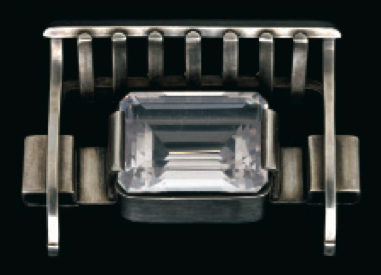
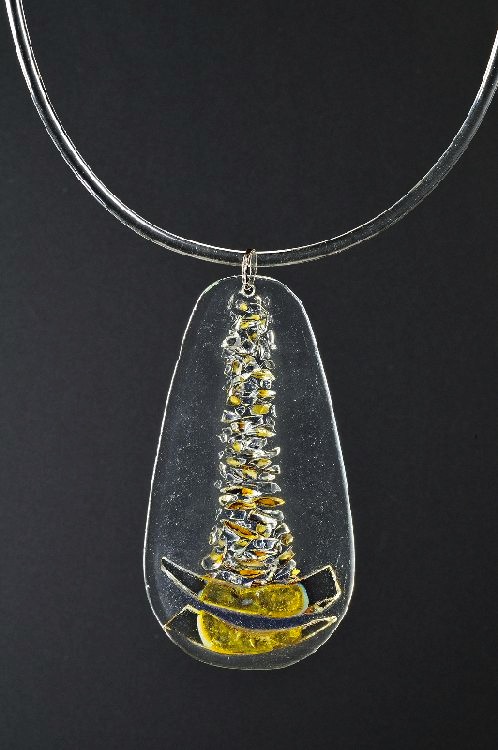
Craver was among the first modernist jewelers in the U.S. to learn and apply sophisticated jewelry-making techniques. During the 1930s, she studied with Arthur Neville Clark at Cranbrook Academy of Art and, in Sweden, with Baron Erik Fleming, silversmith to the Swedish king.
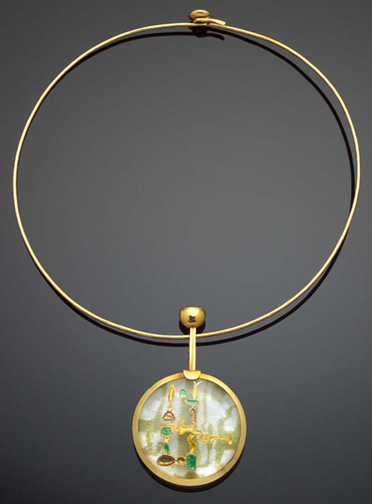
By wartime, she was working for the jewelry manufacturer Handy & Harman and convinced her employer to let her teach workshops to recovering vets. In 1947, she founded an annual series of silversmithing conferences.
Before the war, studio jewelry was typified by the raw quality of work by Art Smith and Sam Kramer, partly the result of a lack of available training. Kramer took a jewelry-making course in southern California taught by a ceramicist and Smith apprenticed with a jeweler. Other jewelry artists of their day learned casting from dentists and forging by hanging out at dockyards.
After the war, vets were eligible to study free on the GI bill and encouraged to take up jewelry-making as a form of physical rehabilitation. It was considered helpful for developing hand-eye coordination and strengthening arms and hands.
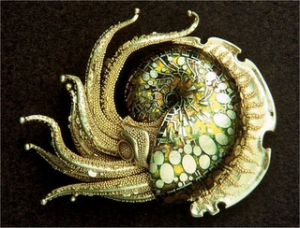
Many jewelry careers were launched at the War Veterans Art Center at the Museum of Modern Art and the Handy and Harman workshops taught by Craver. Among the studio jewelers she helped train were Robert Ebendorf, John Tripp and John Paul Miller. After serving in the Army during WWII, Miller took studio jewelry to a new level by applying ancient granulation and enameling techniques to modern design.
Once she became invested in a fellow artist, Craver was tireless in her efforts to help him advance. Knowing, for example, that Miller was trying to figure out the ancient art of granulation, Craver kept sending him bits of research until she came across a paper written by an archeologist in the American Academy in Rome. It was this analysis that led Miller to create exquisite pieces like this.
RELATED POSTS


